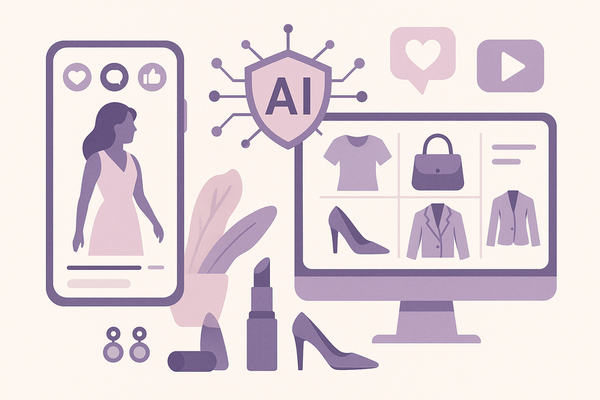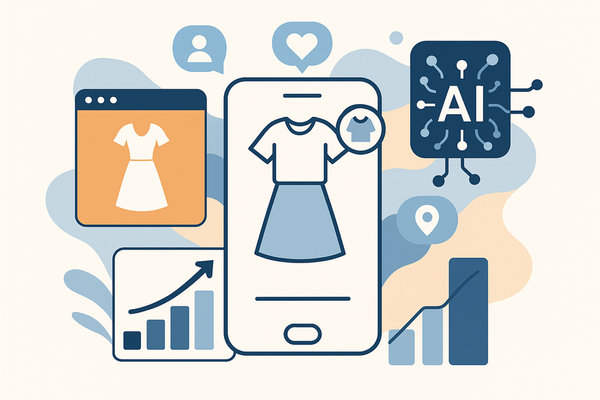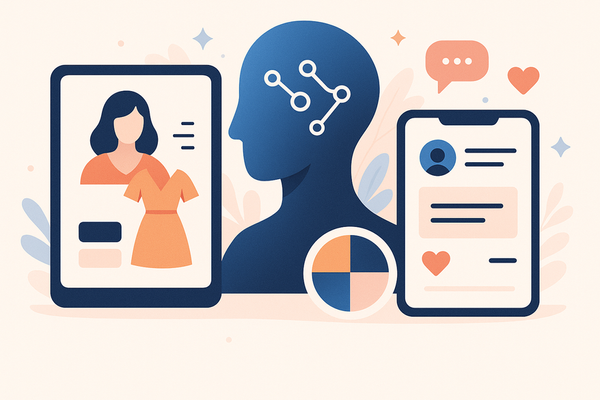How AI Posture Analysis Transforms Health and Performance
Discover how AI posture analysis transforms health and performance by providing real-time insights that enhance ergonomics, reduce injuries, and boost efficiency.

Estimated reading time: 8 minutes
Key Takeaways
- AI posture analysis combines computer vision, machine learning, and sensor data to assess body alignment in real time.
- It replaces subjective manual checks with objective, scalable, continuous feedback.
- Core technologies include pose estimation, pattern recognition, and wearable sensor integration.
- Applications span healthcare, sports, workplace ergonomics, education, and AR/VR.
- Benefits include accuracy, instant alerts, and personalization; challenges cover privacy, dataset diversity, and integration.
Table of Contents
- Introduction
- Section 1: Understanding Traditional Posture Analysis and AI Posture Analysis
- Section 2: How AI Enhances Posture Analysis with AI Posture Analysis
- Section 3: Applications of AI Posture Analysis
- Section 4: Benefits and Challenges of AI Posture Analysis
- Section 5: Future Trends and Innovations in AI Posture Analysis
- Conclusion
- FAQ
AI posture analysis uses artificial intelligence to automatically assess, interpret, and provide feedback on human body posture. It delivers real-time, objective insights to improve health, enhance performance, and prevent injuries in healthcare, sports, and workplace settings. Traditional posture assessments rely on subjective visual checks and manual tools. AI revolutionizes this by replacing guesswork with scalable, data-driven solutions that work continuously.
By leveraging computer vision, machine learning, and sensor integration, AI posture analysis shifts from manual snapshots to live posture tracking. Users receive immediate cues on alignment, muscle balance, and movement patterns. This clarity helps therapists refine recovery plans, coaches correct form, and employers reduce ergonomic risks. For a practical demonstration, the Maxx Report app harnesses AI to deliver comprehensive posture reports and personalized correction cues in real time.
Section 1: Understanding Traditional Posture Analysis and AI Posture Analysis
What Is Posture Analysis?
Posture analysis evaluates body alignment and positioning. Experts look for imbalances, joint misalignments, and muscle strain. It detects injury risks and helps improve movement efficiency.
Traditional Methods
- Visual inspection by therapists or trainers.
- Plumb lines to check vertical alignment.
- Goniometers to measure joint angles.
- Static photography capturing posture at rest.
Limitations of Manual Methods
- Human error and subjective judgments.
- Inconsistent measurements across practitioners.
- No continuous or real-time monitoring.
- Difficulty capturing dynamic movement patterns.
Need for Automated Solutions
Traditional checks only catch posture at a single moment. They cannot track changes during exercises or daily activities. An AI posture analysis system automates alignment checks, measures angles digitally, and provides instant feedback, reducing subjectivity and boosting repeatability. For a broader look at how AI can power continuous self-improvement, check out our guide on AI self-improvement apps.
Section 2: How AI Enhances Posture Analysis with AI Posture Analysis
Core AI Technologies
- Computer Vision & Pose Estimation
• AI models process video frames to detect key joints in 2D or 3D.
• Libraries like OpenCV track limb positions and angles in real time.
• Depth cameras add spatial accuracy. - Machine Learning & Pattern Recognition
• Algorithms train on large, labeled datasets of posture images.
• Models learn to spot deviations like forward head posture or pelvic tilt.
• Classification systems flag high-risk alignments and severity. - Sensor Integration & Wearables
• Inertial Measurement Units (IMUs) in smart garments or watches capture motion data.
• Fusion of visual and sensor inputs boosts detection accuracy.
• Continuous monitoring becomes feasible beyond camera range.
AI Data Pipeline
- Data Capture: Cameras and wearables record movements.
- Preprocessing: Noise filtering, joint keypoint detection, and frame alignment.
- Model Inference: Neural networks estimate posture metrics in milliseconds.
- Feedback Loop: Real-time alerts via app notifications or on-screen cues.
Advantages Over Manual Analysis
- Objective measurements reduce subjectivity.
- Scalability allows monitoring many users simultaneously.
- Efficiency: instant feedback cuts assessment time by up to 80%.
- Real-time coaching supports immediate corrections.
Section 3: Applications of AI Posture Analysis
Healthcare & Rehabilitation
- Remote physiotherapy sessions with posture tracking.
- Continuous patient recovery monitoring at home.
- Early fall risk detection in elderly or neurologic patients.
- Objective metrics guide therapy progress and insurance reporting.
Sports & Fitness
- Form correction during workouts and athletic drills.
- Technique optimization for runners, weightlifters, and swimmers.
- Injury prevention through real-time alerts on risky alignments.
- Performance analytics for coaches and athletes.
Workplace Ergonomics
- Detect unsafe desk or lifting postures in offices and warehouses.
- Support corporate wellness programs with data dashboards.
- Reduce musculoskeletal injuries and related costs.
- Personalized reminders to adjust chair, keyboard, or lift technique.
Education & Dance
- Interactive posture feedback in physical education classes.
- Dance technique improvement by analyzing alignment in real time.
- Teachers access detailed reports on student progress.
- Engaging visual cues help learners self-correct.
Smart Wearables & AR/VR
- Smart clothing with embedded posture sensors.
- VR fitness environments offering immersive posture coaching.
- Augmented reality overlays showing ideal joint angles.
- Continuous self-monitoring during workouts and daily life.
Case Study Callout: Posture AI App
- Personalized recommendations based on user’s movement history.
- Progress tracking with charts showing alignment improvements.
- Motivational alerts to maintain healthy posture habits.
Learn how posture tracking ties into a complete glow up journey.
Section 4: Benefits and Challenges of AI Posture Analysis
Benefits
- Improved Objectivity & Accuracy
AI posture analysis reduces observer bias and records precise angle measurements. - Real-Time Feedback
Immediate alerts help users correct slouching or misalignments as they occur. - Personalized Intervention Plans
AI tailors exercise and stretch routines to individual movement patterns. - Enhanced Long-Term Monitoring
Data logs enable therapists and coaches to track progress over weeks and months.
Challenges
- Data Privacy & Security
Video and physiological data are sensitive and require encryption and consent protocols. - Need for Large, Diverse Datasets
Robust AI models demand varied body types, genders, ethnicities, and movement styles. - Integration with Existing Systems
Healthcare EMRs and corporate platforms may lack APIs for seamless AI data flow.
Section 5: Future Trends and Innovations in AI Posture Analysis
- Enhanced Sensor Technology & Multimodal Data
Fusion of visual, inertial, and physiological sensors adds deeper insights into muscle activation and fatigue. - Advanced Machine Learning Models
Personalized diagnostics using federated learning, predictive analytics, and adaptive feedback. - Remote Monitoring & Telehealth Expansion
Broader reach into rural regions, insurance coverage for remote assessments, and virtual posture clinics. - AR/VR & Smart Environments
Immersive training modules, smart offices that adjust ergonomics, and interactive coaching mirrors.
Conclusion
AI posture analysis transforms how we assess and improve human alignment. By combining computer vision, machine learning, and wearable sensors, it replaces subjective checks with objective, data-driven insights. Applications span healthcare, sports, workplace ergonomics, education, and immersive tech. The benefits include higher accuracy, real-time feedback, and personalized care, while challenges center on data privacy and system integration.
Looking ahead, enhanced sensors, advanced AI models, and telehealth expansion will make posture analysis even more accessible. As AI posture analysis continues to evolve alongside personalized style and wellness platforms—from posture assessment to curated fashion—tools like those in our Best AI Styling App 2025 roundup demonstrate the power of AI across looksmaxxing.
Stay informed on this dynamic field to leverage new tools for personal and organizational posture improvements.
FAQ
- What is AI posture analysis?
AI posture analysis uses AI technology to automatically assess body alignment and provide real-time feedback on posture correctness. - How is AI posture analysis applied?
It’s used in healthcare, sports, workplace ergonomics, education, and AR/VR to offer objective monitoring and personalized coaching. - What about data privacy?
Sensitive video and sensor data require strict encryption, consent protocols, and compliance with regulations to protect user privacy.





